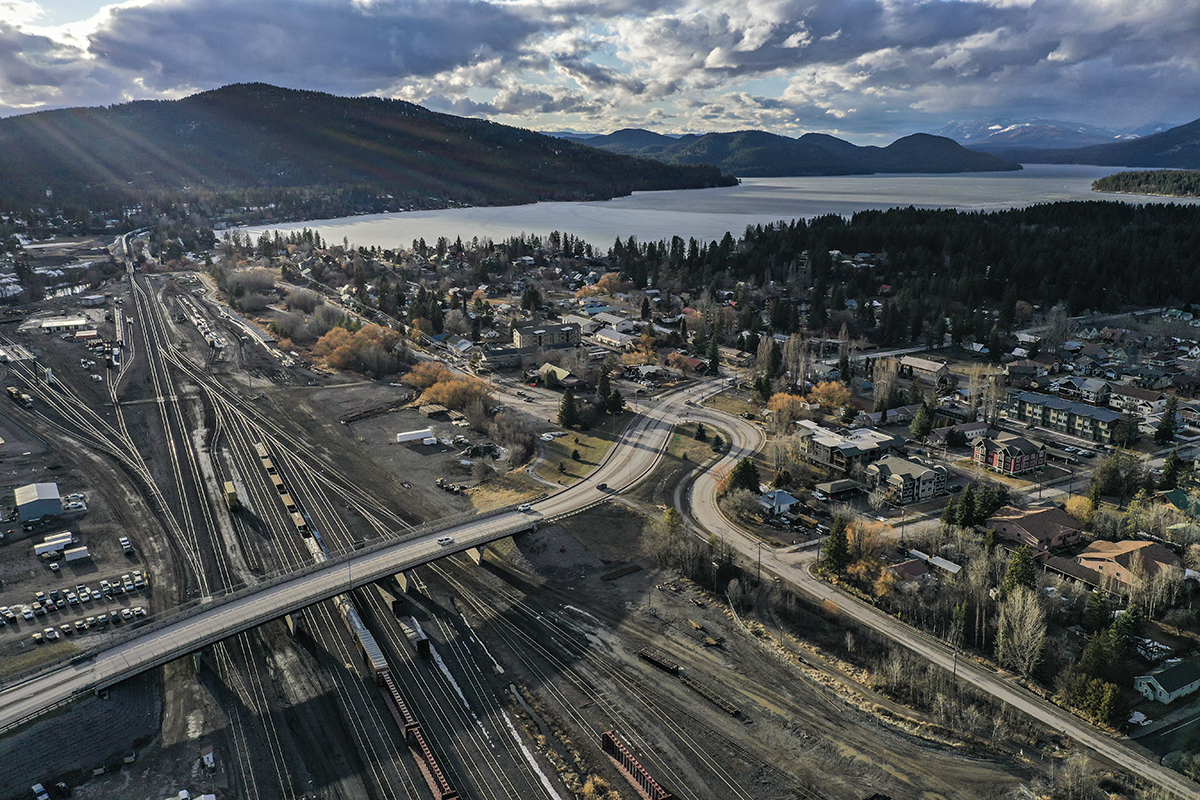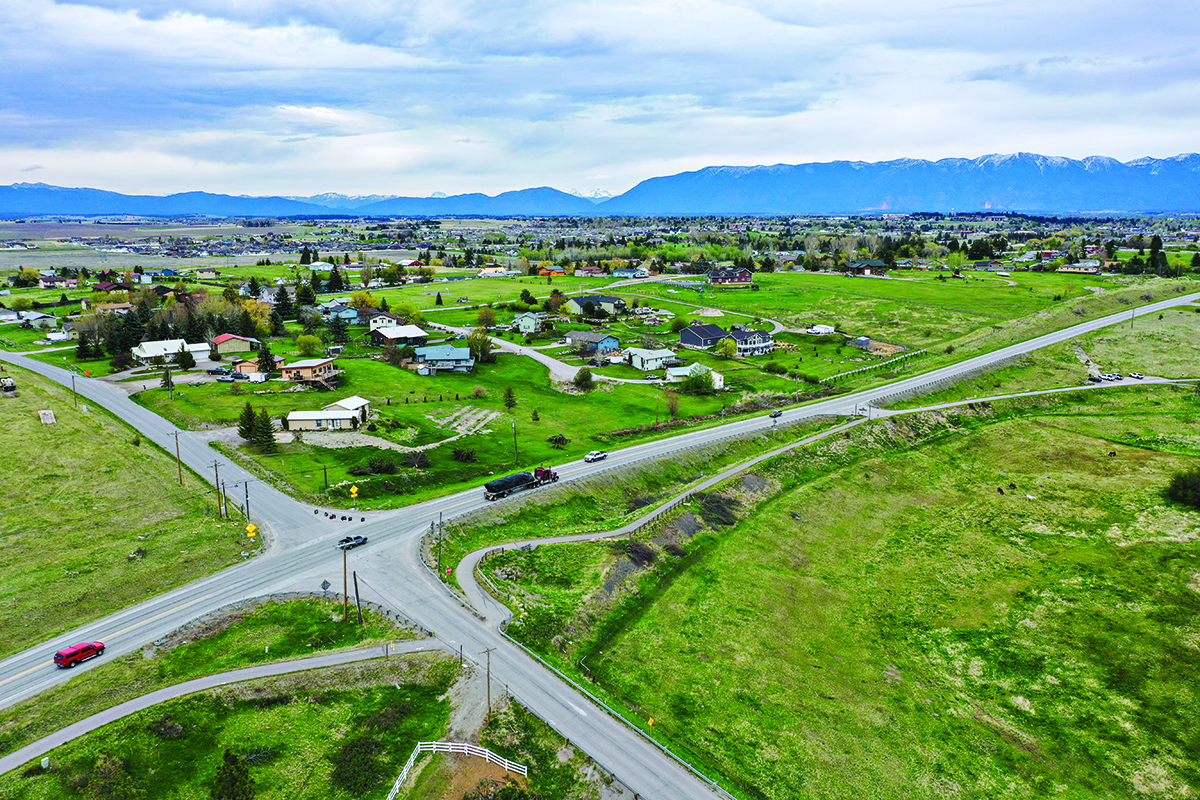Planning for the Flathead’s Future
City officials valley-wide are preparing for continued growth by upgrading and expanding city services while MDT continues road infrastructure projects to address the volume of people
By Maggie Dresser
In the past five years, Whitefish has added more than 1,000 residential units within its city limits, Columbia Falls had $10.5 million in building permits in 2019 and Kalispell is slated to see hundreds of new multifamily units on the market in the next year.
The Flathead Valley has seen steady growth over the past few decades, but few anticipated the sudden growth spurt in 2020 fueled by the pandemic. City planners in every municipality have been preparing for a denser population over the past several years as development booms and new residents flock to the valley.
“I think by and large, (Kalispell) has done a good job at being ahead of the growth curve,” Kalispell Senior Planner PJ Sorensen said. “There’s a lot of work that went into the last several years of planning.”
In anticipation of the growth, Kalispell city officials have been working over the past several years to develop infrastructure for the future. From new water tanks to wastewater treatment plants, the city is strategically planning for population growth as new residential buildings continue to appear.
“The next question is how do you manage that?” Kalispell City Manager Doug Russell said at the Kalispell Chamber of Commerce’s Growth Summit on May 18. “It really starts with our growth policy. It looks at growth patterns in the future … They look at our infrastructure utilities and identify if they are in accordance with the growth policy, and we model those for the growth patterns we see.”
Kalispell’s Public Works Department completed water facility plans in 2018 and sanitary sewer and wastewater treatment plans in 2019, which includes the West Side Interceptor sewer main that installed eight miles of sewer interceptor on the west side of the city to accommodate new developments.

A one-million-gallon elevated water tank is also in the works to address the city’s growth, which will be constructed in Eagle Valley Ranch in north Kalispell next summer.
More than 200 units are projected at Eagle Valley Ranch, a new multifamily development, and Sorensen says there are hundreds of more units in various stages of development in Kalispell.
“This year is certainly a boom year in terms of residential construction, as was it last year,” Sorensen said. “Both of them are much higher than what the typical years would be.”
As of May, there are more than 200 apartments slated for construction in Silverbrook Estates in north Kalispell and 400 units at the Willow Creek Subdivision. The North Town Center will also have a full build-out of more than 600 units in the next few years, and there are hundreds of more units in progress from various developers.
“There’s a huge housing demand out there,” Sorensen said. “We keep hearing it’s a 1% or less vacancy rate, which shows there’s a high demand for housing and no real signs of that slowing down in the future.”
Whitefish, too, is seeing a development boom.
“We’ve definitely been seeing some serious growth happening here,” Whitefish City Planning Director David Taylor said. “Every year we seem to build more residential units than we expect … Our numbers are over 1,000 residential units in the last five years.”
In 2020, Whitefish had 302 new building permits.
“We’ve been scrambling to keep up,” Taylor said.
Whitefish officials also have several infrastructure projects in progress, including major expansions of both the city water and sewer plants.
Construction began on the upgraded wastewater facility plant in 2020 under a $20 million contract and is planned for completion this fall. Separately, the city is also expanding the water treatment plant that treats water from Haskill Creek and Whitefish Lake. A water main and a deep sanitary sewer are currently being constructed on Reservoir Road.
As development extends throughout Whitefish, city officials are also contemplating annexing south of U.S. Highway 40 at the request of property owners who would prefer to have city services.
“There have been a couple property owners that inquired about it,” Taylor said. “It’s easier to develop commercial property if you have city services.”
Columbia Falls’ development is also starting to catch up with its neighboring cities, and Eric Mulcahy, a land-use planner contracted by the city, says there were 28 residential units at $3.5 million in 2019 and 35 units at $8.1 million in 2020.
But Mulcahy says expanding city services is not as straightforward there as in Whitefish and Kalispell.
“In Columbia Falls, we have a number of physical barriers that don’t allow us to readily expand our water and sewer infrastructure,” Mulcahy said. “The Flathead River is our boundary and to the north we have BNSF railroad tracks, which is almost as difficult to deal with as it is trying to put sewer lines under or over a river.”
To the west, Hilltop Road and Tumble Creek pose challenges because it’s difficult to install infrastructure on a hill.
“That’s one of the key factors affecting our supply and value in Columbia Falls,” Mulcahy said.
The volume of people is also straining the valley’s road infrastructure, creating more traffic and congestion along with challenges for the Montana Department of Transportation (MDT).
Construction began on the Kalispell Bypass Interchange in March where crews are removing the roundabout at Foys Lake Road and working to replace it with two roundabouts and an overpass. There’s also a sidewalk improvement project east of Meridian Road, and a roundabout installation project recently began at the intersection of Dern Road and Springcreek Road in Kalispell.
Other big projects include pavement preservation on U.S. Highway 2 from Hungry Horse to Stanton Creek, which will continue through the fall, and a study is being conducted to address the traffic and congestion on West Reserve Drive.
MDT Missoula District Administrator Bob Vosen says funding is a significant challenge for future projects.
“We’ve identified $16 billion worth of needs over the next 20 years and we’ve got $5.3 million worth of identified available funds to complete the work,” Vosen said at the Growth Summit.
“We’ve got a lot of challenges in front of us,” Vosen added.